Photos:: Lawns: Best warm-season grasses for drought conditions

Jim Baird, turfgrass specialist at UC Riverside, displays grasses he is studying for drought tolerance. (Allen J. Schaben / Los Angeles Times)
Turfgrass experts agree that warm-season types, which need 20% less water than cool-season grasses, are the best bet for California’s drought conditions. Here are some of the best.
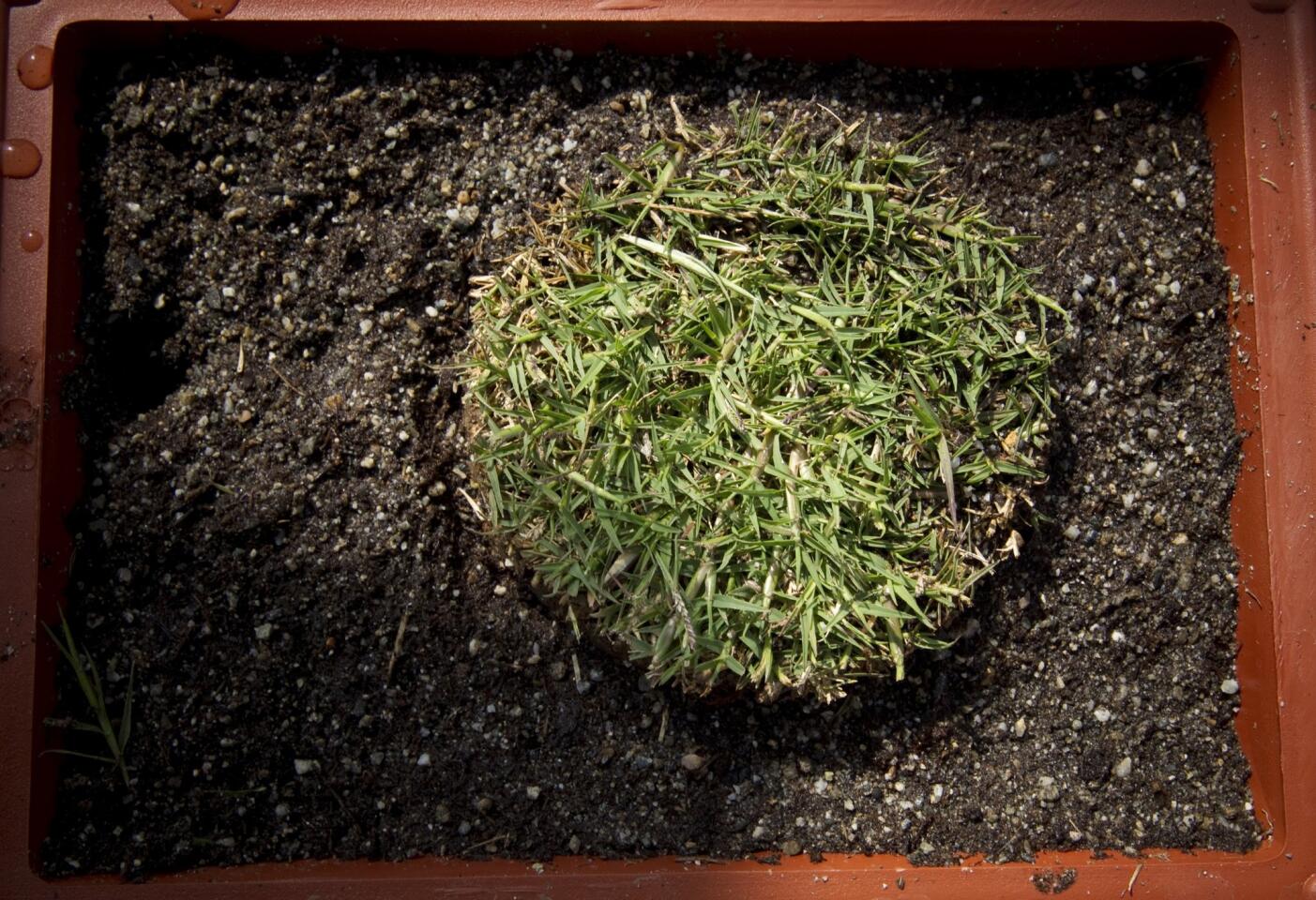
Bermudas
‘Bandera,’ ‘Bull’s Eye,’ ‘Princess-77,’ ‘Santa Ana,’ ‘Tifway’
Features: Best overall warm-season grass for California; high traffic tolerance; needs sun; recuperates well; very good drought and salt tolerance; available in sod, sprigs or seed. ‘Bandera’ and ‘Santa Ana’ do well along the coast; ‘Bandera’ offers better shade tolerance among the Bermudas; ‘Princess-77’ available in seed.
Downside: Very aggressive growth. (Allen J. Schaben / Los Angeles Times)
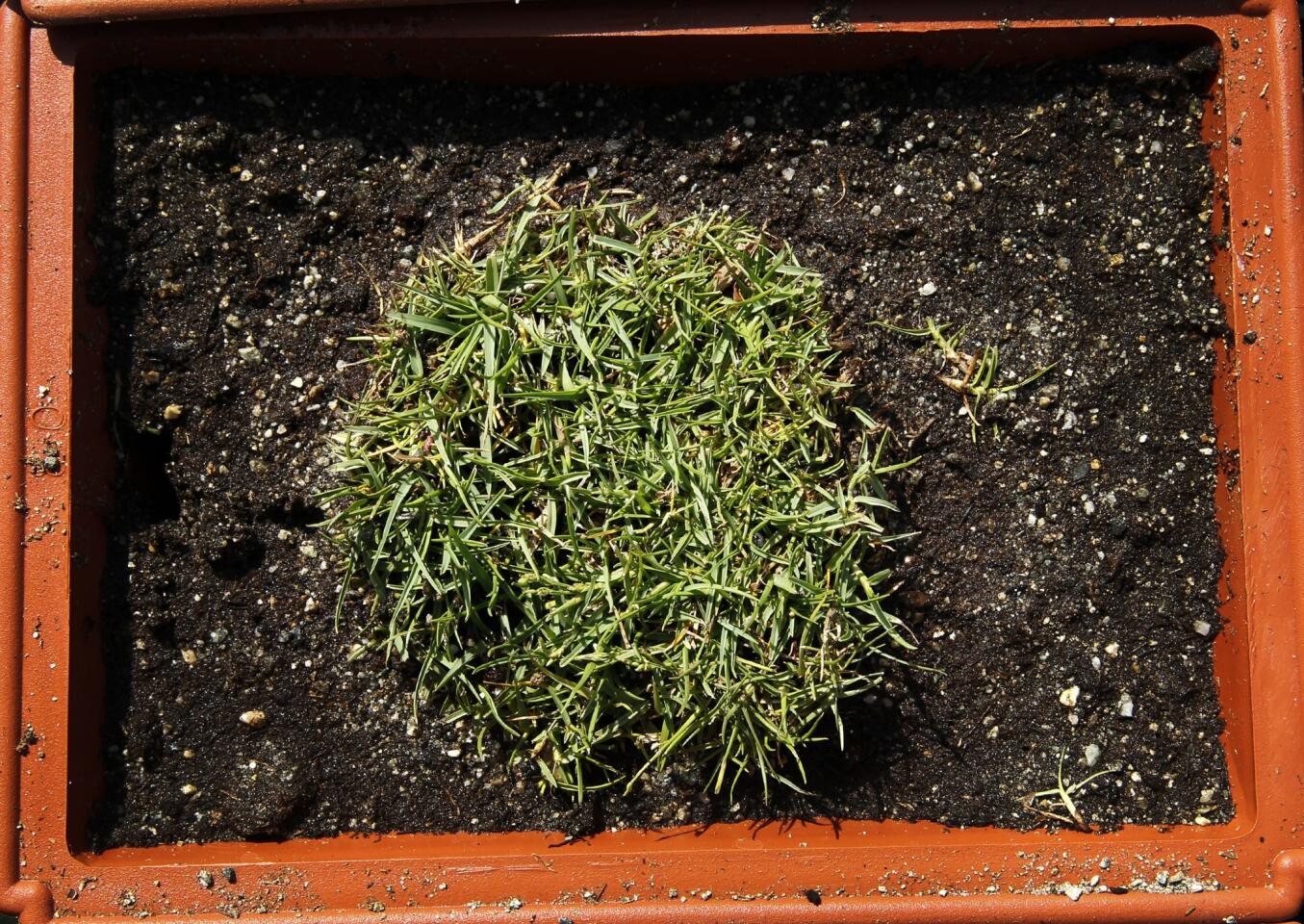
Seashore Paspalum
‘Platinum TE,’ ‘Sea Spray’
Features: High traffic tolerance; shorter dormancy period; stays green nine months or longer; extreme salt tolerance -- can take pure salt water, a plus for those using gray water, which can have a high salt content; also does well in clay; good for the coast. ‘Sea Spray’ available in seed.
Downside: Higher water requirement than the Bermudas.
(Allen J. Schaben / Los Angeles Times)
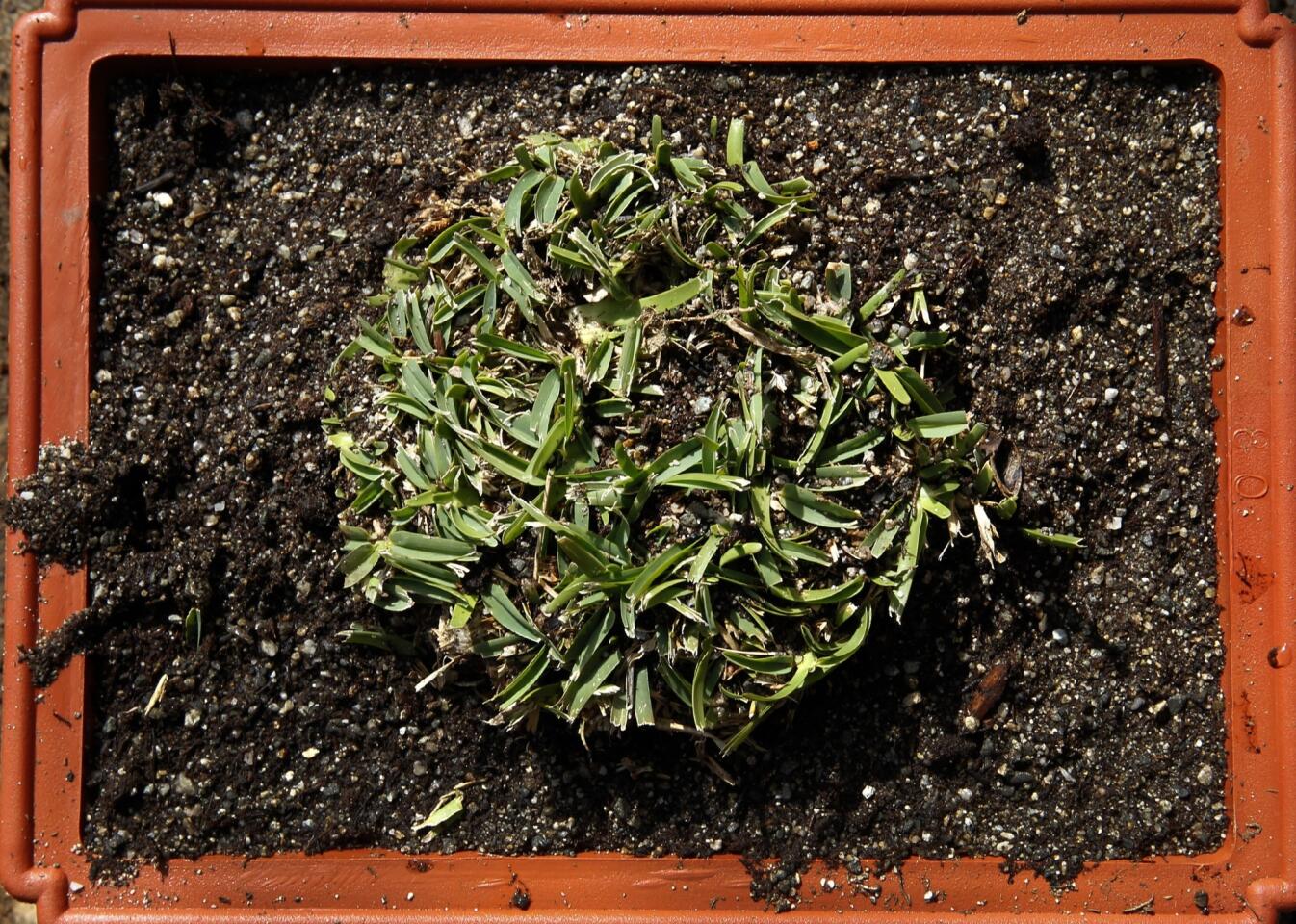
St. Augustine
‘Palmetto,’ ‘Sunclipse’
Features: High traffic tolerance; great shade tolerance; recuperates well and repairs quickly; great lawn for dogs.
Downside: Coarse texture because of wide leaf blades. (Allen J. Schaben / Los Angeles Times)
Advertisement
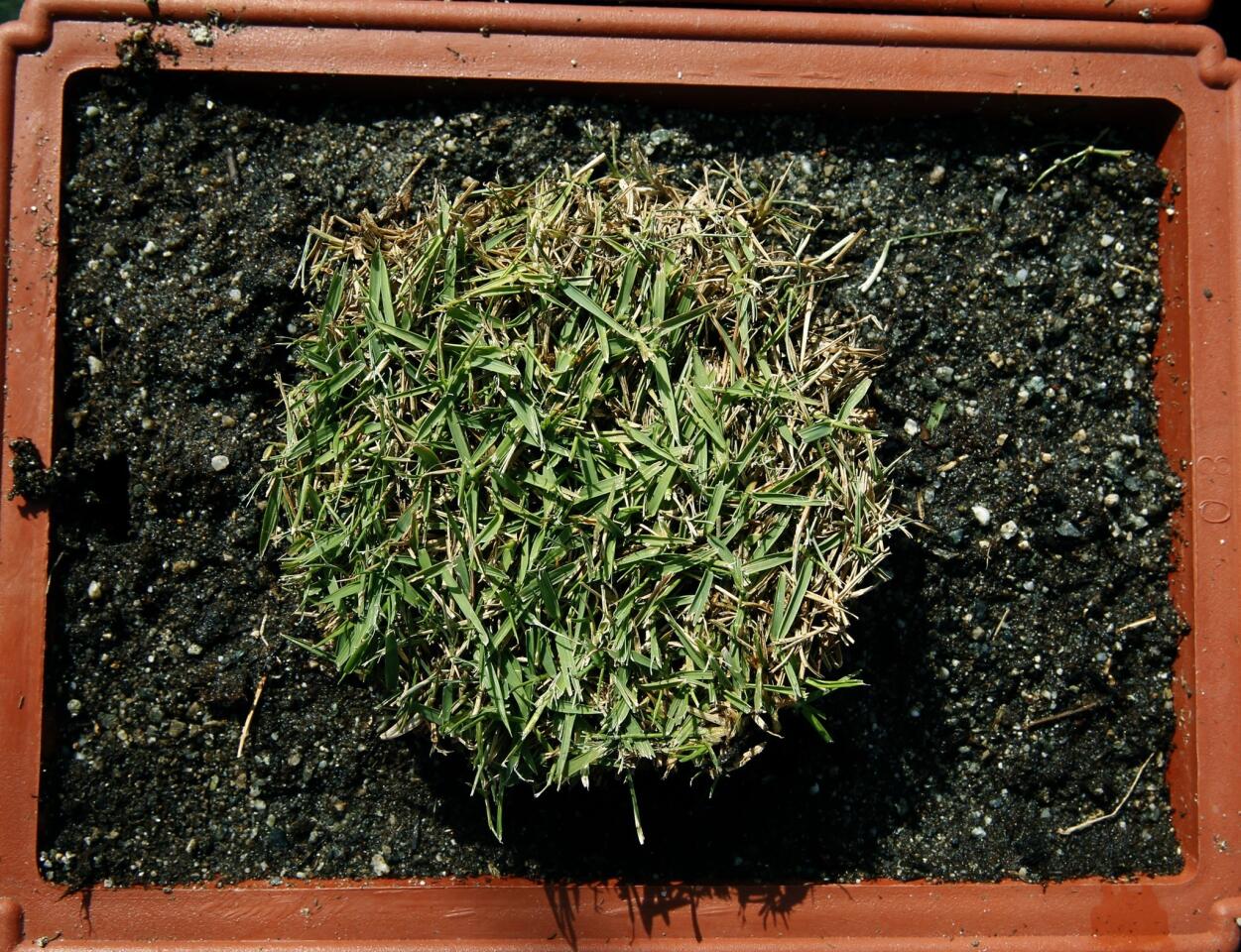
Zoysia
‘De Anza’
Features: Good traffic tolerance; some shade tolerance. ‘De Anza’ was developed for improved color retention.
Downside: Slow to establish by seed, so sod is better; slow to repair. (Allen J. Schaben / Los Angeles Times)
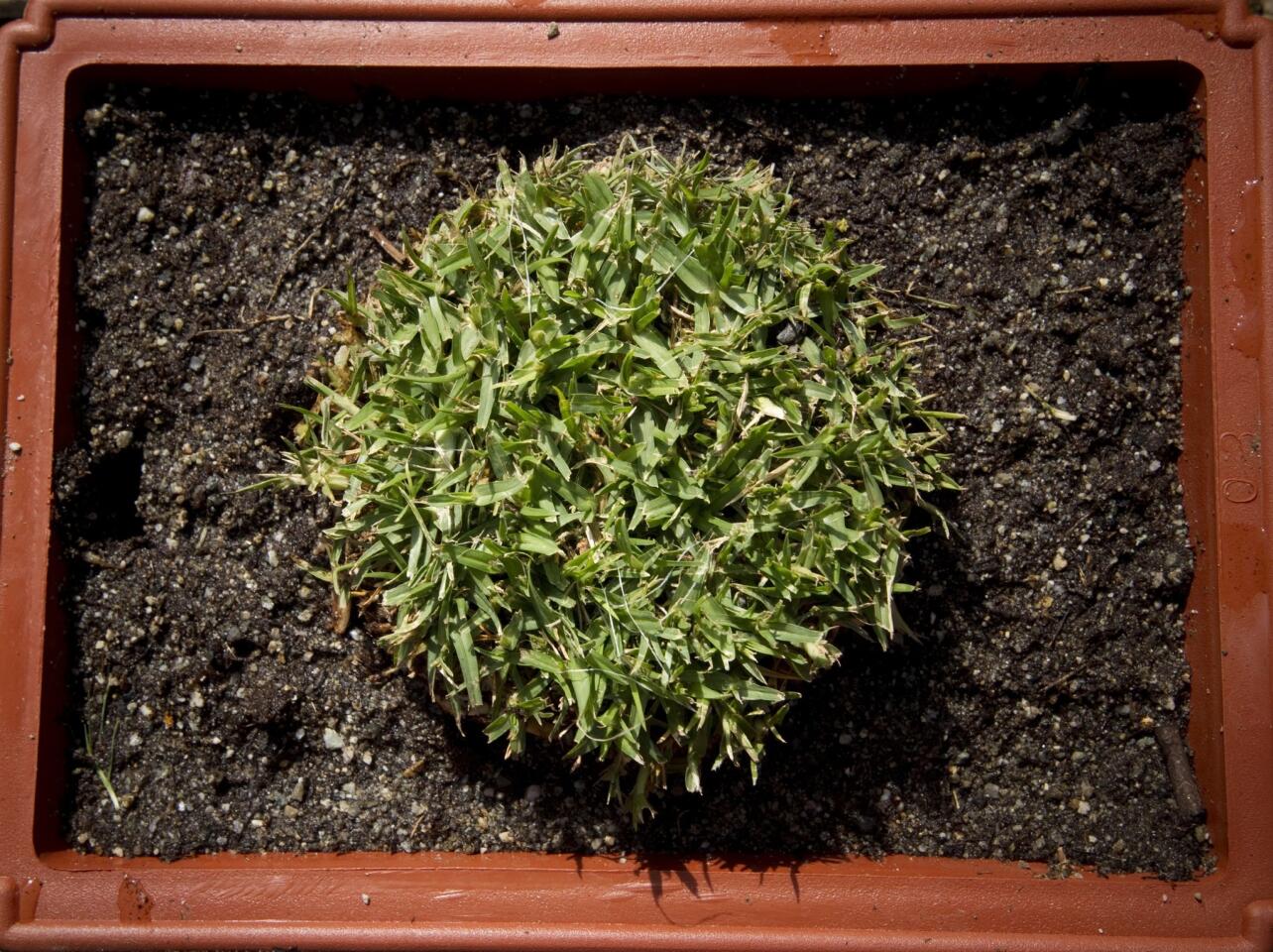
Kikuyu
‘Whittet’
Features: High traffic tolerance; heat and drought tolerant; best color retention of the warm-season grasses; good for the coast; resembles St. Augustine.
Downside: Very aggressive and invasive. (Allen J. Schaben / Los Angeles Times)
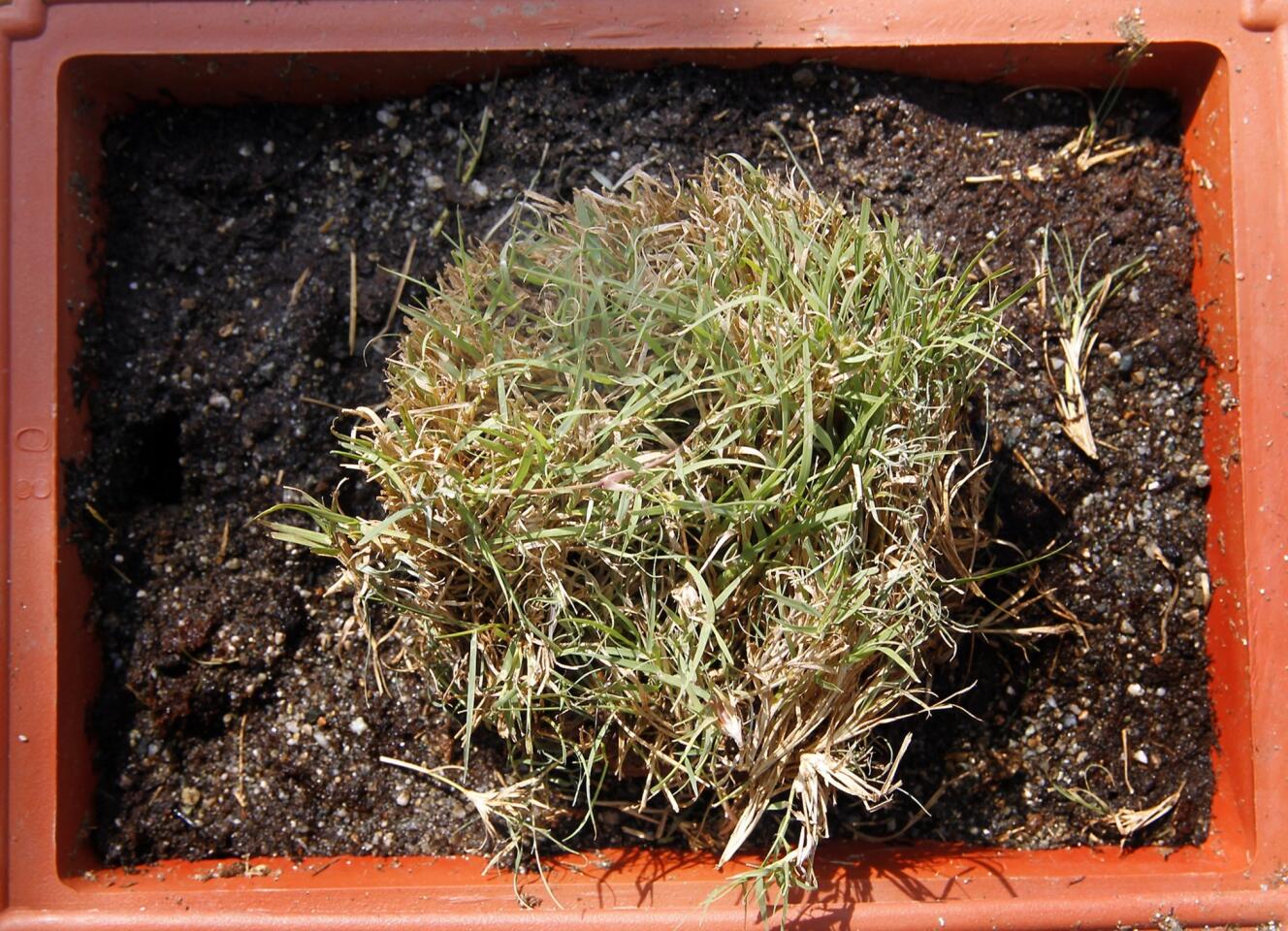
Buffalo grass
‘UC Verde’
Features: Very low water needs; can survive in extreme drought conditions; low fertilizer needs; reduced or no mowing required. Meadowlike, rather than a manicured look, when unmowed.
Downside: Longer winter dormancy period inland (also goes dormant in extreme drought in summer). (Allen J. Schaben / Los Angeles Times)



